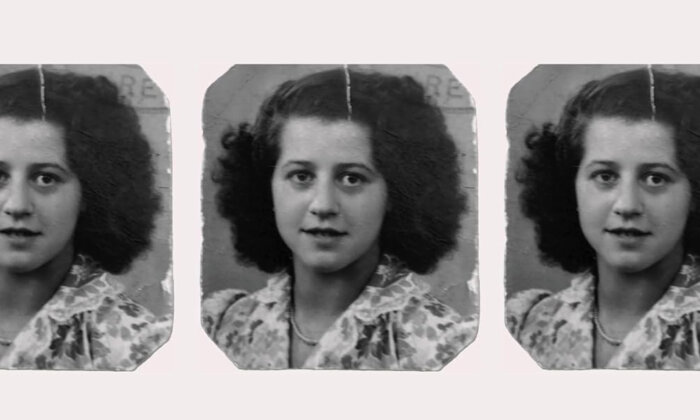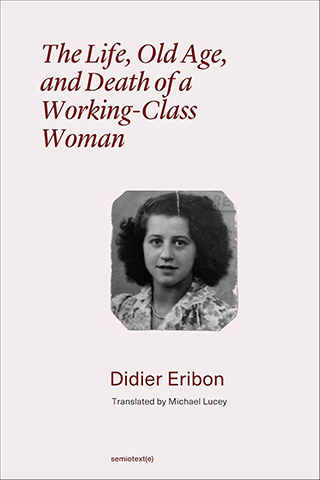My Mother in the Nursing Home

Moving into a nursing home means not only entering a world inhabited by people of an advanced age and often weakened and diminished physically and mentally; it also means entering into a world where a certain sociability is forced on you, and nearly impossible to avoid. You are uprooted from the world you know, the surroundings that have made up your daily life and that, despite all the changes from age and illness that have shrunk their perimeter and the range of constitutive elements, nonetheless have provided you with the sense of a certain kind of continuity, perhaps even of permanence.

Of course, when we are in grade school or high school or in the workplace (a factory, or an office…), or in our daily life in our neighborhoods, each of us has to spend some of our day immersed in different worlds of obligatory cohabitation, involving people we didn’t choose to be with. But within these imposed frameworks of sociability, each of us is more or less free to create preferred relations according to our elective affinities. These choices or preferences arise from likes and dislikes that are shared across different domains, from political or religious or union-based affiliations, or simply from a personal sense of closeness related to feeling comfortable around someone, enjoying chatting in groups of two or three…
There is almost always a time and a place for these various kinds of chosen or preferred relationships among all the others that are not. Is this still true in a nursing home? It must sometimes happen, of course. But there was no way not to notice, in my mother’s case, the vehemence with which she rose up against the simple evocation of the possibility that she might form ties with other residents of the home.
She didn’t want to become the “old lady” who, it must be said, she already was, or nearly.
She complained about being lonely when she lived in her apartment in Tinqueux. Sometimes she would cry, on the phone or when I was visiting: “I’m all alone; it’s no fun being by yourself all the time.” Yet she was not far from missing her solitude now that she found herself obliged to spend time around women and men with whom she had no desire to “rub elbows,” to borrow the phrase she often used to use to refer to informal relationships that grew up between neighbors or coworkers, and that were neither based in necessity nor in friendship, but were rather a kind of informal and unsystematic interaction, chance meetings at the supermarket or in the entryway to the building, an expression that she always used in a pejorative way, in fact, asserting firmly that she didn’t like that kind of thing (“I don’t like rubbing elbows with…”), or making a point of denigrating anyone, particularly any woman, who was given to that kind of thing (“That lady is always rubbing elbows with everyone…”).
In industrialized societies, Norbert Elias emphasizes, individuals, “as they grow older and weaker, are isolated more and more from society and so from the circle of their family and acquaintances. There is an increasing number of institutions in which only old people, who did not know each other in their earlier years, live together. Even with the prevalent high degree of individualization, most people in our society have before retirement formed affective ties not only within their families but with a larger or smaller circle of friends and acquaintances. Ageing itself usually brings with it an increasing withering of such ties outside the narrowest family circle.”
He continues:
Except in the case of old married couples, admission to an old people’s home usually means not only the final severing of old affective ties, but also means living together with people with whom the individual has had no positive affective relationships. Physical care by doctors and nursing personnel may be excellent. But at the same time the separation of the old people from normal life, and their congregation with strangers, means loneliness for the individual. I am here concerned not only with sexual needs, which may be quite active into extreme old age, particularly among men, but also with the emotional valencies between people who enjoy being together, who have a certain attachment to each other. relationships of this kind, too, usually diminish with the transfer to an old people’s home and seldom find a replacement there.
His conclusion is a dreadful one, but its correctness struck me when I reread his book: “Many old people’s homes are therefore deserts of loneliness.”
My mother was 87 years old, and now finding herself surrounded by people in their extreme old age, older than her, some of them no longer in possession of all of their faculties of perception and communication, induced in her a strange state of malaise and rebellion that found expression in episodes of aggressivity toward the women around her, the companions of misfortune in this great tragedy of old age, and the feeling of isolation that is one of its consequences (and for which she reproached us, me and my brothers, by means of indirect but nonetheless quite blunt remarks). Surely this was also a way for her to rebel against the inexorable decline whose increasing effects she experienced in her own body; it was a way of refusing to accept the forecast reflected in the mirror provided by the expressionless face of the woman across from her, who stared at her without a word, without a smile. She was not, and had no desire to be like, that “old lady.” She didn’t want to become the “old lady” who, it must be said, she already was, or nearly.
Bohumil Hrabal describes at length the flood of impressions and emotions that take hold of someone who has just arrived in the new world that is a nursing home, but which they already know, from outside, since almost everyone has already come to visit a relative, recently or long ago, in a similar kind of establishment. The woman who narrates the book is perfectly able-bodied but has decided, all on her own, to come live in a former castle that has been transformed into a care facility for older people, one that looks down on the town where she used to live with her husband. The retirees who inhabit the facility seem to her numb and dazed; she sees them look at her without seeing her because their gaze is turned inward: “they were looking back, to the old times, when they were young, or perhaps they were still grieving bitterly and angrily about some incident they could do nothing more about, something beyond their control, even though the incident had only now reached maturity, while the reasons for whatever had happened were long since past.”
Is this a description that could be applied to the woman who sat across from my mother at the table in the dining room, and who stared at her fixedly? Perhaps she did so without seeing her, sunken as deeply as she was in the silent interior contemplation of her own past. Perhaps she was filled with an impotent despair at no longer having any hold over the events of days gone by, no longer being able to shape what comes next and thereby change something’s meaning, and at having even less hold over the events of today — henceforth only being able to experience things in an utterly passive way. I asked myself who this woman might be.
Who had she been, when she was young, or as an adult? Had she been a “housewife” or had she had a job, and if so, what job — or even jobs in the plural, if she had had several? Had she belonged to a union? Maybe she had worked in the same factory as my mother or another factory in the same industrial area? Maybe they had participated together in the same strikes? Who knows? Had she been politically active? How had she thought about the historical events, small ones and large ones, of the times she had lived through? And who had she loved? What had she liked to do? What was she thinking now that she was cut off from all of that? Indeed, was she thinking at all? Or was it rather the case that she “wasn’t all there anymore,” as that cruel common expression puts it in describing the dwindling of someone’s mental faculties, the loss of their cognitive abilities? I wanted to know: Who had she been? Who was she?
And what about the other people who were there? What past events, what strata of the social world did they incarnate as they were seated there around the tables in the dining room? What common or divergent histories that, in this context, had no chance of rediscovering each other? What subterranean and unperceived links still joined these isolated individualities to each other now that they had been detached from the contexts of their earlier lives, disaffiliated from all their social or professional or political networks? For, despite their current situation, such links still bound them to a collective past, to a common backdrop that perhaps they hadn’t entirely left behind and that they perhaps could have evoked had they agreed to speak to each other.
Aleksandr Solzhenitsyn’s book “Cancer Ward” provides a close-up view of these kinds of situations where someone enters into a closed world, more or less cut off from outside life, and finds themselves surrounded by other people they don’t know with whom they must then spend their days and nights.
In this novel, eight characters (all men) are together in a shared room in a special ward of a Tashkent hospital in the early 1950s. They have not freely chosen to be there; they are there by urgent necessity, having all come to undergo surgical or other kinds of treatments because of a health condition. It is illness that brought them there, but each of them brought along with him his past life, his hopes for the future, and also sis fears that there would be no future for him. Chapter by chapter we hear their personal stories, but most important is the way those stories are juxtaposed with each other, or rather, the way they intersect, superpose themselves on each other, become entangled, or collide.
All this happens to such an extent that this shared room and the ward on which it is situated are transformed as we read into a historico-political crossroads where people who have everything and nothing in common encounter each other — for instance the former prisoner who had been exiled to camps in Siberia and the former Communist Party functionary who eagerly and willingly denounced “traitors” to the nation and to Socialism. Lying in their beds, walking the hallways or in the garden, they are all living in a situation of social equality (or nearly so), to the extent that all of them are equal (or nearly so) in the face of their illness, their treatments, their doctors.
They have not freely chosen to be there; they are there by urgent necessity.
Page after page, personal narrative after personal narrative, conversation after conversation between one set of patients and then another, or with doctors (mostly women), with nurses (also women), and with the women orderlies, secret after secret that is shared between this person and that, what emerges is a general portrait of Soviet society from the 1930s to the 1950s: the war, Stalinism in all its mad repressiveness, the gulag, deportations and banishments, broken lives, attempts to reinvent oneself despite all of that…
The exchanges, the animosities between certain people, momentary reconciliations made inevitable by the imposed close quarters, all of these kinds of interactions between individuals point the reader to more general questions. One can’t help but notice to what an extent these life stories, recounted by the writer in such minute detail, the interactions that are recorded with such sensitivity, only take on meaning if they are placed within the larger group portrait, which itself is only meaningful when seen within the framework of the historical context of the world at large.
Individuals who do not know each other still belong to the same political configuration: the person who did the denouncing and the person who was denounced and deported, but also another two characters, a patient and a woman orderly who recognize each other, without having spoken, as former prisoners in the camps, having therefore survived the same terrible ordeals and who in the end find an evening to spend together where the others can’t see them, and describe for each other the violence they both had to live through, as did millions of others, without ever understanding what was being held against them. All this happens to such an extent that, at the end of it all, no single individual fate, no personal trajectory, can be thought of separately from all the others because all of them, in fact, are linked up with all the others by the events that shaped all of them together.
Didier Eribon, Professor of Sociology at the University of Amiens, is well known for his groundbreaking biography, “Michel Foucault,” first published in 1989. He is the author of numerous books, including “Returning to Reims” and “The Life, Old Age, and Death of a Working-Class Woman” (both published by Semiotext(e)), from which this article is excerpted.



